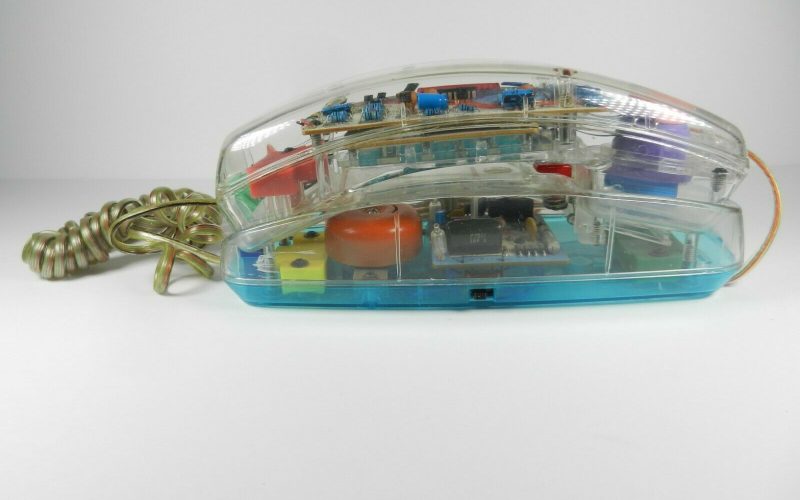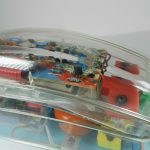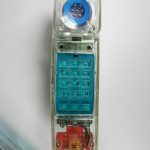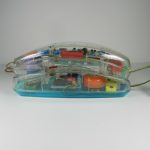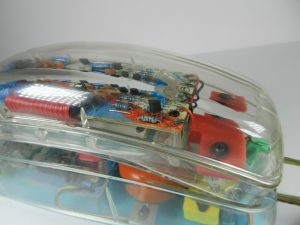
After the introduction of the popular Princess telephone line, in 1959 and the early 1960s, the design motivation for the Trimline series was to create an alternative design that was stylish and easier to use than a traditional telephone. This was accomplished by moving the dial from the telephone’s base to the underside of the handset, between the earpiece and mouthpiece. The same concept was later used for cellular telephone and cordless telephone models. To miniaturize the rotary dial sufficiently to fit in the Trimline handset, the designers invented an unusual moving finger-stop. Like in the Princess line, the dial was lit when the handset was removed from the base. The Trimline was also one of the first phones to use the predecessor of the now-ubiquitous RJ11 modular phone plug and jack.
First introduced in 1965, the Trimline included a lighted dial and was encased in a sleek, curved plastic housing that took up much less space than earlier Western Electric telephones. However, the glass-smooth and shallowly-curved plastic handset proved difficult to retain between cheek and shoulder for hands-free communication without slipping, and this problem was never corrected over the life of the model line. Cushioned clamp-on adaptors were manufactured and sold by third parties to make it easier to cradle the handset, but these add-ons would greatly compromise the aesthetic appearance of the telephone.

